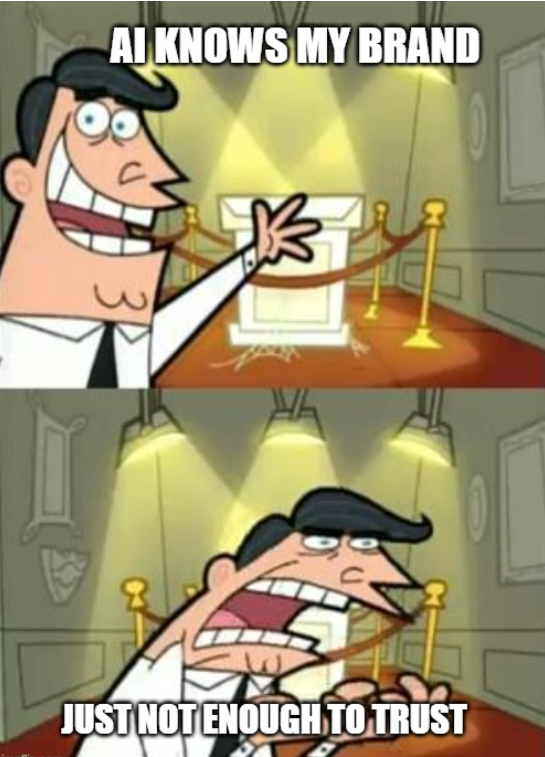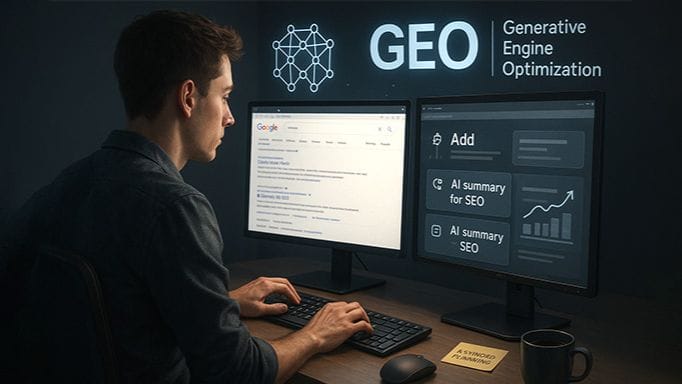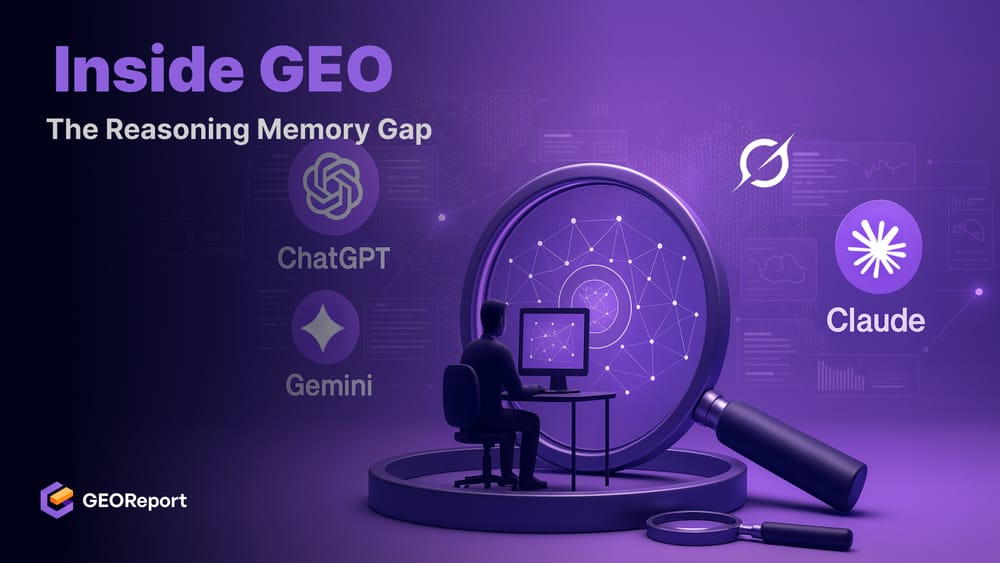BLUF:
Generative engines don’t forget your brand - they stop trusting it.
Even when your content stays online, your reasoning weight decays if your message drifts or your logic weakens. This invisible erosion is the Reasoning Memory Gap when AI still recalls your name but no longer relies on your reasoning.
The Invisible Fade Between Recall and Trust
Most marketers assume that once a model “learns” their brand, it stays remembered. But large language models don’t store facts: they store relationships between meanings.

Every time they answer a query, they rebuild knowledge from scratch, weighting each entity by confidence, not familiarity.
“You never taught AI who you are, you just lent it your reasoning for a while.”
Unlike SEO, where a link can preserve ranking for years, AI visibility depends on semantic stability. When your tone, framing, or data changes too often, AI sees contradiction - not freshness and begins to discount your logic.
Why the Memory Gap Happens
AI doesn’t lose information; it reprioritizes it. Each retraining or update adjusts trust weights which is the probability that a reasoning chain includes your logic as a credible node.
Once that probability falls below a certain threshold, your content stops surfacing even though it still exists within the model. Three causes drive the gap:
| Cause | What Happens | GEO Metric |
|---|---|---|
| Semantic Inconsistency | Shifts in tone, terminology, or framing make your logic unstable. | ↓ Entity Confidence Stability (ECS) |
| Reasoning Redundancy | Publishing similar phrasing across domains compresses uniqueness. | ↓ Entity Persistence Score (EPS) |
| Temporal Drift | Outdated or unrefreshed data reduces AI’s confidence in relevance. | ↓ Temporal Confidence Retention (TCR) |
A 2024 Princeton NLP study on Model Drift in Generative Systems noted that: “LLMs retain structural meaning but lose entity-specific confidence when reasoning consistency is interrupted.”
That’s precisely what happens when brands post often but think unevenly.
Case Study: Evernote – The Brand That AI Still Knows but No Longer Recommends
Context: Evernote once dominated the productivity market — a household name in note-taking apps throughout the 2010s. Its visibility was immense: millions of backlinks, constant tech media mentions, and strong SEO equity.
But in 2024–2025, Evernote’s AI visibility footprint began to collapse.
When users ask ChatGPT, Gemini, or Claude things like: “What are the best note-taking or productivity apps?”
This brand is now rarely included in reasoning responses — replaced by Notion, Obsidian, or Mem.
The Technical Core: How Models Forget Without Forgetting
The Reasoning Memory Gap isn’t about lost data; it’s about trust compression.
Each brand lives as a multidimensional vector built from consistency, factual depth, and semantic alignment. When those attributes fluctuate, the model’s “confidence envelope” around your brand contracts.
You move from being a reasoned presence to a latent mention. AI still knows you, it just no longer bets on your reasoning. This decay follows a clear pattern:
- Stable logic → persistent inclusion.
- Shifted tone → confidence loss.
- Contradiction or redundancy → reasoning merge with generic clusters.
That’s why Entity Confidence Stability (ECS) is the true indicator of Generative Engine Optimization health. It measures whether the AI’s internal map still recognizes your brand as a trusted reasoning source.
Closing the Gap
To preserve reasoning memory, brands must behave like semantic constants - unchanging in essence, adaptive only in evidence.

- Keep one canonical reasoning page: Define what your brand stands for and keep that logic stable across updates.
- Refresh facts, not voice: Update data, not definitions.
- Reinforce coherence: Cross-link related reasoning to form a stable semantic cluster.
- Audit quarterly: Monitor metrics like ECS, EPS, and TCR before visibility drops.
“AI visibility doesn’t reward the loud - it rewards the consistent.”
The Bigger Picture: What the Gap Means for Marketers
The Reasoning Memory Gap reframes content marketing from frequency to fidelity. Brands that evolve too fast lose trust weight faster than they gain reach.
Those that preserve logical coherence maintain visibility long after trend cycles fade. In GEO terms:
- SEO builds exposure; GEO sustains belief.
- Algorithms crawl pages; models recall reasoning.
- Visibility isn’t permanent - it’s probabilistic confidence.
AI doesn’t have memory; it has trust inertia. And like any reputation system, it decays when coherence breaks.
FAQs
What exactly causes the Reasoning Memory Gap?
It happens when your brand’s reasoning style shifts faster than AI can stabilize it. The model still recalls your content, but its confidence in your logic weakens - so you stop appearing in generative answers.
How is this different from losing SEO ranking?
SEO decays when links or signals vanish. GEO decays when reasoning consistency breaks - AI stops weighting you, not crawling you.
How can I tell if my brand is being forgotten by AI?
A steady drop in GEO metrics like ECS and EPS is an early warning. You’ll also notice generative models paraphrasing your logic without attribution.
How do I fix reasoning decay?
Keep one canonical logic page, refresh data instead of tone, and maintain coherence across every surface. AI rewards semantic consistency, not content volume.
Editor’s Note
In generative ecosystems, memory is probabilistic. Every update is a re-evaluation of trust. You can’t teach AI once - you must teach it consistently.
The brands that last are not the ones that speak often, but the ones that never contradict their own reasoning.

